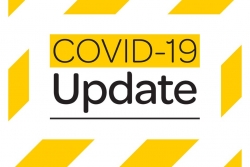2021/09/07(화) 23:59부터 뉴질랜드에 거주하는 12세 이상의 모든 사람들은 QR코드를 스캔하거나 종이 명부에 서명하여 자신의 행방을 기록해야 한다.
의무 기록 보관은 현재의 Covid-19 Delta 발생 및 봉쇄 이전에 스캔, 로그인한 사람 수가 적었기 때문에 연락처 추적을 강화하기 위한 노력의 일환이다.
스캔해야 할 책임은 사업주들에게 있다. 의무 기록 보관 규칙을 적용하는 사업자는 경보 수준이 변경되고 7일 간의 준비 기간이 주어진다. 실제적인 의미에서 이는 두 가지 주요 사항을 의미한다.
기업은 개인이 방문 기록을 할 수 있는 펜과 종이 시스템을 제공해야 한다. 이 기록들은 60일 동안 보관되다가 폐기해야 하며 다른 목적으로 사용하거나 보건 공무원이 아닌 다른 사람과 공유해서는 안된다.
기업은 고객이 QR 코드를 스캔(표시 의무)하거나 방문 기록을 남길 수 있도록 해야 한다. 직원도 스캔을 해야 시스템이 제대로 작동하는지 확인할 수 있다.
보건부에서 새로운 간소화된 QR 코드 포스터 디자인을 이용할 수 있다.
의무적인 Covid19 기록 보관 도입





























































